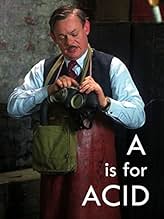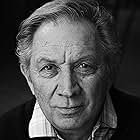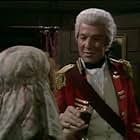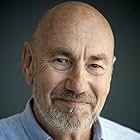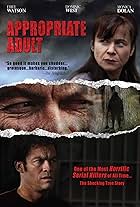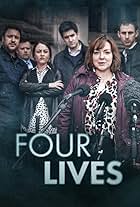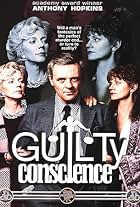John George Haigh, the notorious "acid bath murderer" in 1940s England, becomes the subject of this dramatization.John George Haigh, the notorious "acid bath murderer" in 1940s England, becomes the subject of this dramatization.John George Haigh, the notorious "acid bath murderer" in 1940s England, becomes the subject of this dramatization.
Photos
Christopher Ettridge
- Steven Rogers
- (as Chris Ettridge)
- Director
- Writer
- All cast & crew
- Production, box office & more at IMDbPro
Storyline
Did you know
- GoofsIn 1945, the widow Olive Durand-Deacon describes her husband as having served in "The Glorious Glosters". Although a common nickname for the Gloucestershire Regiment, it derives from their heroism at the battle of the Imjin River during the Korean War - in 1951.
- Quotes
[for the third time, Haigh is in prison for fraud]
John George Haigh: Do you realise, without a body, there can be no conviction for murder?
Morrison: Blimey. Gerra way.
John George Haigh: It's true. The law is called "corpus delicti".
Morrison: So who are you gonna murder, then?
John George Haigh: Well, if you get 21 months for doing very little, might as well do something big.
- ConnectionsFeatures Nosferatu: A Symphony of Horror (1922)
- SoundtracksWhen the Lights Go On Again
(uncredited)
Performed by Vera Lynn
[detectives inspecting the first crime scene]
Featured review
Martin Clunes has an amazing range as an actor; he has attempted everything from Mr Chipps in "Goodbye Mr Chipps" to Garry the Slob in "Men Behaving Badly". In this TV film scripted by Glenn Chandler, creator of "Taggart", he impersonates a dapper, cheerful, sport car driving type who is also an accomplished pianist called John Haigh who turns out to be a diabolical serial killer who disposes of his victims in acid baths.
. It is a nice performance and the production values are splendid seldom has England in the 1940s been better evoked, but there is something missing. What happened is clearly conveyed. How it was done is depicted as graphically as most audiences could reasonably take. But, the question of "why" is left hanging, as it were. Was it for the money? Did Haigh, like Dr Shipman, just get a kick out of killing? Or, despite the opinion of the dozen or so experts the prosecutors and the Home Office consulted, was Haigh crazy? At the trial, not shown in this film, Haigh, represented by top-flight counsel paid for by "The News of the World", pleaded insanity. Only one psychiatrist gave evidence for the defence, to such little effect that the prosecutor didn't bother to cross-examine him.
Well, it's not the film-makers' fault that Haigh was one of those bland serial killers who defy understanding. In line with his own account, Haigh's Yorkshire Plymouth Brethren parents are depicted as strict and narrow, but not as unloving. He turned to crime at an early age and had quite a record of petty dishonesty offences. For him, prison was Crime University and he hatched the idea for his body disposal method, the acid bath, while inside. He was capable of conducting an emotional relationship with the youthful "Gillian" (Keely Hawes) while luring his victims to their deaths.
For what it's worth I think Haigh's train of thought went something like this: "I am an outsider, society does not value my true worth, I will be good to people who do really appreciate me (like my parents and Gillian), and the rest are fair game." At least it makes more sense than the vampire theory. Haigh is also one of those criminals who were bound to be caught sooner or later (his arrest was not a miracle of detection), which makes one ask: did he think he was invincible or did he really want to be caught? The film doesn't help us with this, but it's a good reconstruction and a fine piece of acting by Martin Clunes.
. It is a nice performance and the production values are splendid seldom has England in the 1940s been better evoked, but there is something missing. What happened is clearly conveyed. How it was done is depicted as graphically as most audiences could reasonably take. But, the question of "why" is left hanging, as it were. Was it for the money? Did Haigh, like Dr Shipman, just get a kick out of killing? Or, despite the opinion of the dozen or so experts the prosecutors and the Home Office consulted, was Haigh crazy? At the trial, not shown in this film, Haigh, represented by top-flight counsel paid for by "The News of the World", pleaded insanity. Only one psychiatrist gave evidence for the defence, to such little effect that the prosecutor didn't bother to cross-examine him.
Well, it's not the film-makers' fault that Haigh was one of those bland serial killers who defy understanding. In line with his own account, Haigh's Yorkshire Plymouth Brethren parents are depicted as strict and narrow, but not as unloving. He turned to crime at an early age and had quite a record of petty dishonesty offences. For him, prison was Crime University and he hatched the idea for his body disposal method, the acid bath, while inside. He was capable of conducting an emotional relationship with the youthful "Gillian" (Keely Hawes) while luring his victims to their deaths.
For what it's worth I think Haigh's train of thought went something like this: "I am an outsider, society does not value my true worth, I will be good to people who do really appreciate me (like my parents and Gillian), and the rest are fair game." At least it makes more sense than the vampire theory. Haigh is also one of those criminals who were bound to be caught sooner or later (his arrest was not a miracle of detection), which makes one ask: did he think he was invincible or did he really want to be caught? The film doesn't help us with this, but it's a good reconstruction and a fine piece of acting by Martin Clunes.
Details
- Release date
- Country of origin
- Language
- Also known as
- Crimes Quase Perfeitos
- Filming locations
- Bradford Industrial Museum, Moorside Mills, Moorside Road, Eccleshill, Bradford, West Yorkshire, England, UK(Haigh's parents' house and neighbourhood)
- Production companies
- See more company credits at IMDbPro
Contribute to this page
Suggest an edit or add missing content

